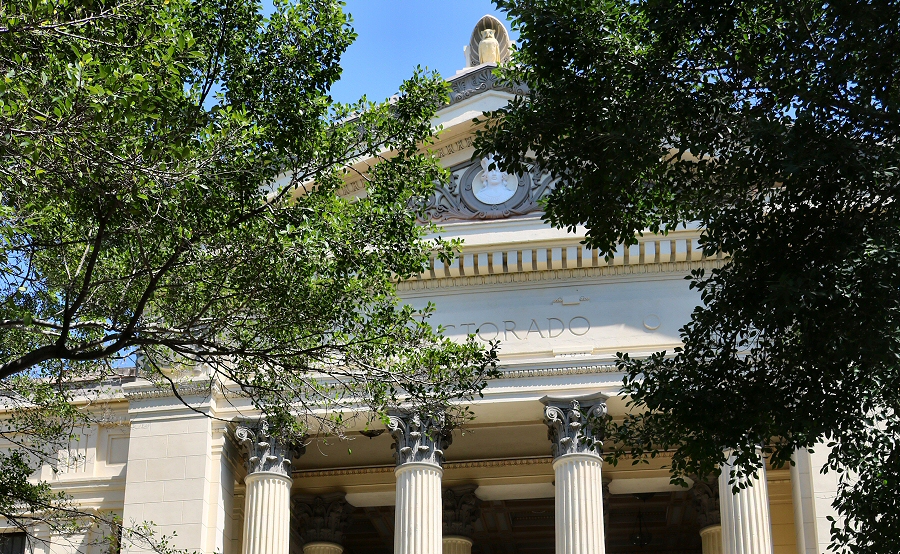
The university camp is accessed through an immense stone stairway facing the street L. The 50-meters wide Escalinata (the staircase) has 88 steps. It is popular by night concerts for young people. At the top of the monumental entrance stands the patinated bronze statue of a woman seated in a chair. It is the Alma Mater, the emblem of the university. Alma mater (nourishing or nursing mother) is an allegorical Latin phrase for a university, school, or college, suggesting that a school provides intellectual nourishment to its students. It can also mean the school from which one graduated.
The majestic sculpture has been cast by the Czech artist Mario Joseph Korbel in 1919 and it was installed in its current location in 1927, at the direction of the Cuban architect Raul Otero. The twice-life-size statue has six bas-reliefs, representing various disciplines taught at the university. She is dressed in a long-sleeve tunic and extends her bare arms, beckoning all those who desire knowledge.
The head, face and neck of the statue were inspired by 16-year old Feliciana "Chana" Villalón, the daughter of José Ramón Villalón y Sánchez, professor of analytical mathematics at the university, and the rest of the body of the sculpture was inspired by a mixed-race adult Habanera.
The columned portico of the rectorate leads to a rectangular square, called Plaza Ignacio Agramonte that is surrounded by the buildings of the university like the Faculty of Law and the Biblioteca Central Rubén Martínez Villena that was established in 1936. A tank, captured by the rebels in Santa Clara in 1958, is on the display in the square.
The Escuela de Ciencias (School of Sciences), on the south side of the square (on the left to the rectorate), contains the Museo de Historia Natural Felipe Poey on the ground floor and the Museo Antropológico Montané (stablished in 1903) on the second floor. The Museo de Historia Natural Felipe Poey is the oldest museum in Cuba, founded in 1842 by the Royal Academy of Medical, Physical and Natural Sciences.
Behind the library, Aula Magna (Great Hall) features magnificent murals by Armando Menocal y Menocal, representing medicine, science, art, thought, liberal arts, literature and law. Also, there is the marble tomb of the patriot Félix Varela.
In the
square in front of the Escalinata, there is a monument that
contains the ashes of Julio Antonio Mella, the founder of the
Federación Estudiantil Universitaria in 1922 and later, of the
Cuban Communist Party in 1925. He was assassinated by the order
of the President Machado in Mexico City.
